Why We Need More Diverse Texts in Primary Schools
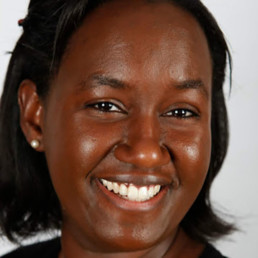
Written by Fabia Turner
Over ten years’ combined experience in education and educational publishing and a member of the Critics of Colour Collective
I first realised I wanted to make books when I was five years old. I’d just bought Mr Greedy by Roger Hargreaves, from a stall in my school’s lobby. The purchase price was a mere 10 pence, and in that brief exchange of money for books, my life changed forever.
As I proudly held that little paperback, I experienced what I can only describe as sensory joy! The pristine shiny cover, the whiff of glue/ink on every page turn plus the satisfying creak from the spine as it inevitably yielded. I knew right then the magical process of creating books was a thing I must be part of.
The problem was I was Black, and Roger Hargreaves was not. Neither were Jean and Gareth Adamson who created the Topsy and Tim series…or Roald Dahl, Eric Carle, Shirley Hughes, Helen Creswell, Ian Serraillier, Michael Bond, Edgar Allan Poe, or Henry Wadsworth Longfellow. These writers dominated my childhood experience and although their texts undeniably developed my literacy skills, they simultaneously dampened my ambition to work in publishing. Lack of exposure to diverse literature in my formative years meant I believed only white people were skilled enough, clever enough, and powerful enough to write and publish books.
It wasn’t until GCSEs, when a radical history teacher introduced me to Toni Morrison, that I was finally exposed to Black authors. I devoured Morrison’s books, but the damage had already been done. My early literary experiences were deeply ingrained in my psyche and I had zero confidence in my abilities as a creative.
Later, my A-level English teacher begged me to apply to Oxbridge, but fear of failure took over, and I refused. After all, in class we’d studied Shakespeare, Hughes, Wordsworth, Larkin, Chaucer…you see where I’m going with this! My parents didn’t envisage a publishing career for their Black daughter either so, eventually, I became a teacher, and the years rolled by. It took 25 years, from the time I bought Mr Greedy, to believe I was just about good enough to attend a publishing interview—and to my complete shock, I got the job!
I tell you all this so you understand the real impact of limiting access to multicultural resources on Black children’s outcomes. The literature we are exposed to when young plays a huge part in shaping our view of ourselves and the world around us. Publishers, educators, and parents need to be vigilant and discerning about the range of texts available to young readers to ensure they develop the self-confidence, self-worth, and drive to pursue their deepest desires.
Which leads me to my next point: quality not quantity. Some Black books hitting the market, from white and Black authors, may check the diversity box but do not meet the high standards required for whole-class teaching. Teachers should not feel pressured to include Black texts—especially those written by celebrities—if they are not up to scratch. (I won’t name names!)
As we’ve always done, regardless of the author’s ethnicity, texts need to be scrutinised for their suitability, otherwise we’ll just start pedalling backwards! The recent misjudged illustration, discovered by a student in one of AQA’s psychological textbooks, points up the need to evaluate all aspects of educational resources.
So far on my book quest, I have encountered some inspirational like-minded teachers who are working hard towards change for the better. I would like to shine a light on some of them:
Calder Valley Books for Change: Amazing early years teacher, Ciara Sturges, has organised a much-needed crowdfunding initiative. Her aim is to raise enough money to buy quality diverse and inclusive books for every primary school in the Calder Valley, from Rastrick to Walsden. Follow her on Instagram and donate to her JustGiving page if you can.
Jamel C Campbell is an early years educator, EY consultant and aspiring children’s author. He has worked in the industry for 18 years. Jamel is one of the UK’s Men in the Early Years Champions/Ambassadors. He has featured on numerous platforms as a keynote speaker and collaborated with many well-respected EY professionals. He stresses the importance of having men in the early years and a balanced workforce. He offers three training workshops for EY teams and settings, based around approaches to practice and staff wellbeing. Follow him on Twitter or Instagram.
Jen Foster is a passionate educator and mentor who has released a refreshingly frank special-edition issue of her e-mag Foster Our Teachers, which focuses on diversity and inclusion in UK schools. It’s called ‘The Inclusion Issue’, it’s free to download and is written for teachers by teachers. It contains a great article about use of multicultural texts in the classroom. Follow Jen on Instagram to get the link to download the e-mag.
Why Decolonise the Curriculum?
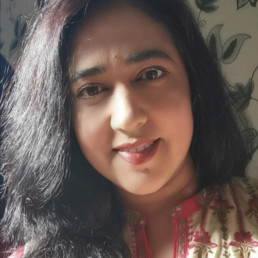
Written by Nuzhat Uthmani
Primary Teacher specialising in Global Citizenship and Antiracist education
I posed a survey through @Scotedpolls recently in which 25% of respondents said they did not feel they needed to decolonise the curriculum. Despite the majority of respondents expressing an interest in learning more, this statistic stuck with me. Is it because educators don’t understand what the term means or is it because they don’t see that there is an inherent problem with our curriculum? Let me address both these possibilities.
This time last year, even I had not heard of this term. Lockdown allowed me the freedom to invest in my own professional development and, as an advocate of global citizenship, I learnt more about decolonising the curriculum and its impact on the education system.
Traditionally, much of our curriculum is framed around the successes of the British Empire. It fails to acknowledge the contribution of communities and nations without which the empire would not have been as successful or wealthy as it once was. The stories of what those nations sacrificed as a result has been hidden away for centuries. Decolonising the curriculum refers to the inclusion of those stories, characters and contributions of others around the world that has impacted on the lives that we live today.
The Black Lives Matter movement is seeking to do this by raising awareness of how the UK gained from the slave trade while committing human rights abuses on those communities. However, as educators we must be mindful of not promoting a stereotypical view of certain groups. When we teach about slavery, we should be mindful to also teach about the contribution of Black, Asian and Ethnic Minorities to Science, the Arts and Politics for example.
I’m on a mission now to embed diversity across all the curriculum. It does not mean scrapping everything we know and teaching new topics, instead it involves a mind-shift from educators, ensuring the inclusion of diverse examples and resources in their daily teaching. It means ensuring that one narrative doesn’t dominate out curriculum but a diversity of perspectives and experiences are represented.
So, what about those in our community who feel nothing needs to change? My question to those is how inclusive is your practice? Holding standalone themed weeks is a box ticking exercise we need to move away from and embrace diversity in all that we do. If you rarely use books with characters of colour, if you only use examples from the Western world, then that is not inclusive to those learners who never see their heritage valued within the classroom, so please think again.
If you want to learn more please check my blog on Global Citizenship Education for lesson plans, research, and links to a variety of organisations who are all working towards establishing anti-racist education and can help you get started on your journey to offering a more inclusive and diverse curriculum.
A Reflection on My First Year of Teaching, Inspired by #DiverseEd

Written by Char Aramis
A primary NQT who uses they/them pronouns. Char blogs at transteacher.wordpress.com
Along with many others, I had the joy of listening (and tweeting!) along to the online #DiverseEd event on 17th October. When Hannah Wilson (@Ethical_Leader) asked me to write a blog response, it took me a while to decide on a subject, but we all know that the best way to improve is to reflect on what we’ve done before, so here is a reflection on my first year of teaching through a lens of diversity and inclusion.
I am going to use the things I have learned over the last few months to reflect on the things that I taught and the way that I taught them – specifically topic in terms 1, 2 and 4, because covering everything would make this blog far too long. However, I am still new to this – and to teaching! – so I welcome any additional points or suggestions you may have after reading this.
Because of the topics we studied, most of the issues here relate to race, ethnicity and nationality. For context, we were based in an area in the South West of England where nearly 85% of people were born in the British Isles. Of the rest, a good chunk hail from Poland, with others from Romania, the Philippines, Turkey and Bangladesh making up the rest. In my class, about half of the children had English as an additional language, including children from all of the countries listed above plus one or two others. Roughly two-thirds of them would generally be considered White.
So then, let’s get started. As I’m sure many schools did, we ran a Black History topic at the start of the year. Each year group focused on a significant Black person from history and we studied Nelson Mandela. We also briefly mentioned Martin Luther King Jr and Katherine Johnson in an end-of-term art project, which was displayed in the school for the rest of the year.
Now, if I recall correctly, these had been decided before I joined the school. Nonetheless, I don’t think I noticed at the time that thing that appears strikingly obvious to me now: none of these figures is from British history. Most of them, as is common in our studies of Black history in British schools, are from the United States and Nelson Mandela is of course from South Africa. I wonder if perhaps this is worse: I expect South Africa – a country that many of these pupils may never have heard of – seems much more remote and less relevant to them than America, which they at least engage with regularly through film and television.
We discussed racism and protests and fair treatment, but I certainly lacked the confidence and knowledge to address these subjects in the way they deserved (it was my first ever term of teaching). I do still feel that I would benefit from further training and resources to support this.
If I were to teach Black history as a topic again, I would definitely seek to choose a figure or subject that is more relevant to British history. The Bristol bus boycott or Windrush, for example. If I had to teach Nelson Mandela, I would link it back to racism in the UK around the same time – although we had no official segregation, I could teach about Britain before the Race Relations Act(s) and cases such as that of the marriage between Seretse Khama and Ruth Williams.
Our term 2 topic was extreme weather, specifically tropical storms. We focused on tornadoes and Kansas because we linked this to The Wizard of Oz. There was essentially no representation of any under-represented groups here – focussing for the moment on the topic teaching and not any subjects that are or could be discussed in relation to the book.
In the interests of allowing children to be seen in our curriculum and broadening pupils’ geographical knowledge beyond “the West” (I notice that the National Curriculum for KS2 only requires geographical study of regions of “the United Kingdom, … a European country, and … North or South America”), we perhaps could instead have looked instead at the Philippines, Bangladesh or the Pacific Islands (one child in the class was from Melanesia), which can also experience tornadoes, typhoons and cyclones. The difficulty here I think would be in deciding whether to focus on one over the others and if so, which one. Additionally, it would have been very specific to my class and much less relevant to the parallel classes in the year group. However, it could have been an opportunity for certain pupils to talk about the countries their families come from and perhaps teach their peers something of the language they use at home.
In term 4, we studied the Amazon Rainforest. I had planned a lesson on the history of the major city of Manaus, including its (pre-)colonial history and the impacts of the rubber industry, but I never got a chance to deliver it because we closed for lockdown. This is a subject which, I’m sure, deserves more than one lesson but the focus of our topic was actually on the physical geography – rivers and rainforests – as well as map work with a little human geography squeezed in.
I never fully finished the plan for this lesson so it’s difficult to evaluate it, but if I were to come back to this topic, I think it is worth considering the perspective from which I tell this history. It is important to show the effects that the arrival of Europeans had on indigenous populations and their home, and to consider the way they were treated. I do think I would probably need some support to do that topic justice.
There is an awful lot more to be considered regarding both the content and approach of my first year of teaching but that will have to wait for future blog posts – probably over on my own blog. Thank you for reading – any comments, feedback or questions are welcomed and encouraged.
Interactive Diversity Calendar 2021

Written by Dual Frequency
Dual Frequency is a teaching resource provider that seeks to promote dialogue in relation to inclusion
This December, Dual Frequency is thrilled to share with you a brand new interactive diversity calendar that can be used in schools, education settings and other organisations to ensure you never miss a significant date in the EDI calendar.
Why is the diversity calendar important?
Because diversity matters, every single day! The more we immerse ourselves in diverse groups, the more we will be able to celebrate positive representation of these groups, and the richer our communities become.
How can you implement the diversity calendar within your organisation?
The diversity calendar includes a mixture of equality, diversity and inclusion related events along with key dates. This is not intended as an exhaustive list. At a glance you can see the key dates that are listed each month, click the date to be signposted to a resource and more information, plus suggestions of how you can celebrate the date.
How does the colour code in the diversity calendar 2021 work?
The calendar is colour coded to the strands of the Equality Act 2010. It is important to value everybody’s contribution to society all year round: far too many communities are so regularly overlooked in the Gregorian calendar. By focusing on the protected characteristics that fall under the Equality Act, our hope is these communities will no longer be overlooked but celebrated in contrast.
If you require the calendar in a different format, such as large text or on an (accessible) yellow background, then let us know and we will do our best to meet your requirements.
How do I get my calendar?
Download yours right now by clicking this link: https://www.dualfrequency.co.uk/diversity-and-inclusion-calendar-2021
If you are in a position to make a donation for your calendar, then we appreciate this. It helps to keep a grassroots organisation like Dual Frequency running and makes a huge difference to our community fund which ensures we can pay our contributors for their time and efforts.
Lest We Forget
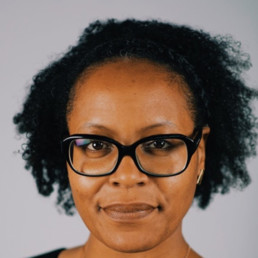
Written by Angie Browne
Education leader and founder of Nourished Collective. Author of Lighting the Way: The Case for Ethical Leadership in Schools
I have been busier than ever lately, which is a great problem to have, but as I was explaining to a group of school leaders this week, it’s also a sobering problem to have. Sobering because most of my work comes from supporting organisations who are embracing Diversity, Equity and Inclusion in the wake of the murder of George Floyd on May 25th 2020 in Minneapolis, Minnesota.
As I am going about my work, a refrain that repeats itself over and over is ‘lest we forget’. For most of us, ‘lest we forget’ has come to have meaning through commemorative war services, services honouring soldiers that have fought and died. However, the phrase, with biblical roots, is generally attributed to Rudyard Kipling’s usage in his poem ‘Recessional’.
It seems curious to have landed on this phrase, used to celebrate British imperial power and rue its demise by Kipling. Curious because I now use it with such de-colonising intent. But, the mind does strange things and perhaps, because I am an English teacher, I so often find myself with fragments of phrases echoing about the chamber of my mind with no direct realisation of the connections being made in there, the relevance to events past and present.
Inheritance, legacy and leaving the world in better shape than I found it are such important concepts for me. I feel grateful to my ancestors daily, seek to be a good ancestor as much as I can and work in ways that allow me to live out an ambition of leaving behind something ‘good’.
I cannot read ‘Dulce et Decorum Est’ without it bringing a lump to my throat. Who is not haunted by the final lines of the poem? Every single time I taught this poem the urgency of English teaching, of education and of creating a world in which our young were not sent to senseless deaths stirred me.
If you could hear, at every jolt, the blood
Come gargling from the froth-corrupted lungs,
Obscene as cancer, bitter as the cud
Of vile, incurable sores on innocent tongues,—
My friend, you would not tell with such high zest
To children ardent for some desperate glory,
The old Lie: Dulce et decorum est
Pro patria mori.
Who among us is not moved by the futility of youthful death articulated in Brooke’s ‘The Soldier’. With a boy of my own now, with young male cousins and nephews galore, imagining a past in which they were sent to a far off end is heart-breaking, and the urgency of creating a better future feels ever more important.
If I should die, think only this of me:
That there’s some corner of a foreign field
That is forever England. There shall be
In that rich earth a richer dust concealed;
A dust whom England bore, shaped, made aware,
Gave, once, her flowers to love, her ways to roam;
A body of England’s, breathing English air,
Washed by the rivers, blest by suns of home.
‘Lest we forget’ comes to me when I deliver Diversity, Equity and Inclusion work because we must not keep churning out the mistakes of the past, we must not forget those that have died in senseless circumstances.
‘Lest we forget’ means that I punctuate my work with the people and the places of those whose lives we commemorate as we learn about the limitations of our humanity and commit to doing better. It means that we remember Stephen Lawrence, the black British teenager who was murdered on April 22nd 1993 in a knife attack in London by a group of his contemporaries. It means that we recognise a bus stop in Eltham, a small corner of South-East London where lies a richer meaning, a responsibility we all have to do better.
As educators the detail about Stephen Lawrence and the boys who murdered him are essential. On the day of Lawrence’s murder he had been at school, his murderers were also of school age. It is vital to my work that we anchor details like this and not allow ourselves the get-out clause of distant proximity, of hazy memory, of foggy facts. Not allow this to obscure the urgency of the work we all know we need to undertake. Work that will ensure that no teenager dies alone at a bus stop, no teenager leaves our school gates and commits such a heinous and hate-filled crime.
‘Lest we forget’ means we remember Bijan Ebrahimi, a disabled Iranian refugee murdered in Bristol on the July 14th 2013 by a man called Lee James. Lee James had been, but a 17-year-old boy when the hate-fuelled campaign against Ebrahimi had begun. Let’s not shy away from the detail and let’s be clear on the facts. Ebrahimi was beaten, dragged into the street and set alight to by a mob who had lost their minds. There is a corner of a street in Bristol where lies a richer meaning, a responsibility we all have to do better.
‘Lest we forget’ means we anchor our work to a deeper purpose. We commit to the individuals whose deaths should make for a future in which it never happens again. In the ambition, the scope, the reach of the work we engage in to tackle homophobic, transphobic and biphobic behaviour we remember Ian Baynham. We say his name. We compute the detail of the brutal attack of a 62-year-old gay man on September 25th 2009 in Trafalgar Square. We acknowledge that his attackers were of school-age at the time of the attack that led to his death. We commemorate his life in a small corner of Trafalgar Square, acknowledging a richer meaning, a responsibility we all have to do better.
At the heart of Diversity, Equity and Inclusion work for me is a desire to be respectful enough to know who we remember and why. At a personal level, it’s about a past that stretches way back to times when my ancestors were enslaved, put on boats and then brutally put to work, my responsibility to them is to make the absolute most of my liberation. At a societal level, it’s about saying the names of the people who have given their lives needlessly, and collectively understanding what we want and need to do differently to create the kind of society we are all proud of. At an institutional level, it’s about being bold enough to give the lives of Stephen Lawrence, Bijan Ebrahimi, Ian Baynham and countless others meaning through the ambition of our work, our curriculum, our institutional cultures, our organisational structures and processes.
So, over the coming weeks and months, I urge you not to forget, not to get sloppy about who we remember, why we remember them and what our remembrance means for the future. I encourage you to take care and not slip into the laziness of statements like ‘when all the George Floyd stuff happened’. Remember, with care and attention to the details, the dates, the names and follow that golden thread of careful thought through to its manifestation in precise, detailed and luminary action in your work and your life.
How I recruited a diverse board and why it was important to me
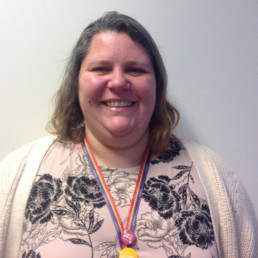
Written by Ninna Makrinov
Organisational Psychologist with over 20 years' experience in Higher Education. Currently the Chair of Governors at Water Mill Primary School.
On 30 September I Tweeted “I have been re-elected chair of governors at Water Mill Primary School. Such a pleasure to be able to serve. I’ve also recruited for all our vacancies and have the most visibly diverse board I have seen in the school this far. Thanks @Penny_Ten for your ideas.”
Here, (in a blog that was first published on the BAMEed website) I articulate why diversity on the board is important to me. And share some ideas that you might want to try when recruiting new members to yours.
A diverse board:
I am chair of governors in a small one form entry primary school in Birmingham. We are extremely proud of the diverse community we serve. It includes children from all over the world, many who arrive to school without speaking English. Because of our location near the University of Birmingham and Queen Elizabeth hospital, some of our children are only with us during their parent’s studies or work placements. When visiting the school, I see this fantastic diversity. And the children see it too! In our latest Ofsted report, the inspector quoted a child saying ‘We are all unique and great friends from different countries. We are like the united nations here’. We also have children who live permanently in the local area; they also come from diverse backgrounds.
Leadership has historically been another matter. When I joined the board we were all white; I brought some diversity, as I immigrated to the UK (for the second time) with my children and they joined the school with still little English. I did not question the lack of diversity then. It seemed the norm, educated white British people providing a service for the community. We cared, we wanted the best for the children. But we (or at least I) did not see how important it was the diversity of our community was visibly represented within the board.
I have been through a personal journey during the past 4 years that totally changed my focus. For years I have believed in multiculturalism, I have worked in international education, I have lived in three countries. Looking back, I was rather naïve in my beliefs. Maybe because in Chile, where I come from, racism is blatant I did not see it in the UK. I started attending an anti-racist pedagogies forum at work a couple of years ago, that changed my outlook. I will not delve into my process, I imagine it would bore a diverse audience to read about how I realised about my white privilege. I should have known!
Having a visibly diverse board is important to me because I realise I cannot serve a community I don’t understand. All voices need to be heard and mine is not more important than others. Our children will be able to see themselves in us, parents might trust us more. Our discussions will, I expect, be enriched by asking questions coming from different perspectives. I hope that recruiting a visibly diverse board is a starting point to diversifying our leadership, improving our policies and engaging in deep reflection. I genuinely value diversity, I have for some time; but I now know that diversity in leadership doesn’t happen by accident.
Recruiting diverse members:
Recruiting board members for school governance is a challenge in itself. I imagine I am not the only one who at some points has felt that I am begging for members. And we need to make sure we have the right skills set on the table. I know some boards achieve this by having specialised committees and big numbers. At Water Mill, we made a decision that the best governance solution for our school was to have a small board (9 members), with frequent meetings and (almost) no committees. We embarked on a skills development journey using the DfE’s competency framework. And we made a conscious commitment to recruiting diverse members. We also decided not to appoint unless we agreed of the value to the board.
As vacancies arose, we openly indicated that we were looking for diverse members. That was, I am sorry to say, not enough. The reason for this was obvious to me when I was delivering a confidence training session to university students and one of them openly discussed what she called the elephant in the room, all were women from ethnic minority backgrounds. She shared her experiences of discrimination and how she would not apply for a job in a place that was not already diverse, to avoid this. In her eyes, a recruitment pack that mentioned diversity was just saying ‘not for me’. How could we make our obviously white educated board the place for those who were not like us? I got advice on ideas to try and came up with some myself.
I still feel that our current diverse board is serendipitous. Three governors were elected by parents and I found my next door neighbour (and good friend) on Inspiring Governance. However, I hope some of the ideas I tried might help:
- Commit to diversity: Discuss diversity openly in your board. Create a list of the characteristics you ideally would want to have. Not all diversity if visible, but visible diversity can help demonstrate your commitment openly.
- Celebrate the diversity you already have: Think about how your board and/or school is already diverse. Share this and make it visible. Add diversity stories on webpages, for example. Our headteacher updated our webpage recently; I think it looks great.
- Ask for what you are looking for: Although I mentioned above that just adding a diversity statement was not enough, I still think this is needed. Make sure it includes your reasoning; I changed ours from ‘we welcome applications from BME backgrounds” to “We would particularly welcome nominations from parents from diverse ethnic backgrounds. We are committed to the diversity of our school; we would like our governing board membership to demonstrate this.”
- Target specifically for the diversity you need: I used Inspiring Governance and Governors for Schools to support my search (if you have not tried them, do!). Inspiring Governance has a shortlisting system. In this occasion we wanted men and minority members; I did not contact any white women in my search. The vacancies were open to all, but I did not reach out to them.
I am looking forward to continuing this journey. A diverse board is not only about recruitment, but also about retention. This will require us to effectively listen to each other, value diverse opinions, ensure everyone feels like a valued member. I start this year with 4 new members, almost half of my board. We are integrating opportunities to get to know each other and training sessions during our meetings. My main focus is to build each member’s confidence in their role. I will know that I have succeeded when others are ready to step up and take the responsibility of chairing the board. I love my role, but I believe my board is better served by diversity in leadership.
Research Assumptions: Collaboration with The Centre for Education and Youth
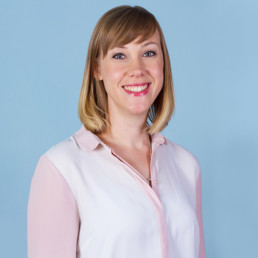
Written by Alix Robertson
Associate at The Centre for Education and Youth
A decade ago, a Canadian professor of human evolutionary biology named Joseph Heinrich published a paper with the curious title: ‘The weirdest people in the world?’.
The study explored how behavioural science was dominated by the perspectives of researchers who drew on samples from Western, Educated, Industrialised, Rich, and Democratic (WEIRD) societies. It has often been implicitly assumed that the results produced from working with these groups are as representative of the human species as any other population.
But are researchers justified in making this assumption? Heinrich and his colleagues, psychologists Steven Heine and Ara Norenzayan, pursued this question by carrying out an empirical review of studies involving comparative experimentation on important psychological or behavioural variables. While not all research is created equal, the study was published in the international journal ‘Behavioural and Brain Sciences’, as well as in the renowned British scientific journal ‘Nature’, and Henrich went on to develop the idea into a book that was released this year.
The researchers reported that findings based on ‘WEIRD’ subjects are actually particularly unusual, compared with the rest of the human species, across a range of areas including fairness, cooperation, reasoning styles and self-concepts. The study suggested that members of WEIRD societies, including young children, are among the least representative populations when it comes to generalising about humans. Heinrich concluded that “we need to be less cavalier in addressing questions of human nature on the basis of data drawn from this particularly thin, and rather unusual, slice of humanity”.
Given these findings, the team at CfEY are keen to use our expertise in research to support Diverse Educator’s goal of improving diversity, equity, and inclusion in education. To do this we will be acting as ‘ambassadors’ helping DiverseEd to establish its own research strand, made up of studies carried out by or focusing on groups within DiverseEd’s nine categories of protected characteristics – and beyond.
To kick start this work we have contributed some of our existing research to seed the collection and we look forward to supporting DiverseEd in growing this bank in future.
- Encountering Faiths and Beliefs: The role of Intercultural Education in schools and communities – a report with Three Faiths Forum (now The Faith & Belief Forum) outlining the key principles of Intercultural Education and offering insights into how these principles can be adapted to suit different settings’ needs.
- Special educational needs and their links to poverty - a report for the Joseph Rowntree Foundation showing close links between children having SEND and growing up in poverty; as well as the additional barriers these children face in accessing the support they need.
- Ethnicity, Gender and Social Mobility – a report for the Social Mobility Commissionin collaboration with Education Datalab, which explores how ethnicity, gender and poverty interact to support or constrain young people’s social mobility.
- Progression to University by Gypsy, Roma and Traveller Pupils - a report in partnership with Kings College London’s Widening Participation department, which reveals the barriers ‘at every level’ that combine to make Gypsy, Roma and Traveller pupils one of the most under-represented groups in UK universities.
- A Place to Call Home: Understanding Youth Homelessness – research undertaken in partnership with the Sage Foundation, looking at how youth homelessness and education interact, and different ways in which the education system can support young people at risk of becoming – or who are – homeless.
- Schools and Youth Mental Health: A briefing on current challenges and ways forward – a report with Minds Ahead examining the scale and severity of the UK’s Youth Mental health crisis.
- ‘Boys on Track’: Improving support for white FSM-eligible and black Caribbean boys in London - a report with the Greater London Authority looking at how support for white free school meal-eligible and black Caribbean boys across London can be improved.
- Special or Unique - a report from Disability Rights UK and CfEY that explores young people’s attitudes towards disability and young disabled people’s experiences of school.
- Representation, engagement and participation: Latinx students in higher education - a report with King’s College London, examining the representation, engagement and participation of Latinx students in higher education.
We hope that these examples of our work will inspire others to join in with this exciting initiative. At CfEY we apply a critical lens to everything we do, and while anyone who is interested will be free to submit their research to the collection, we encourage the sharing of robust findings. By contributing quality work on the important themes that DiverseEd spotlights, you will be helping to build up a growing bank of studies that will encourage readers to think carefully about diversity and equality, and how they can drive improvements in representation.
Watch out for two events Diverse Educators (with support from the CfEY) will be running early next year to introduce the DiverseEd research strand.
“You Can’t Be What You Can’t See”: Growing Future Leaders in Education
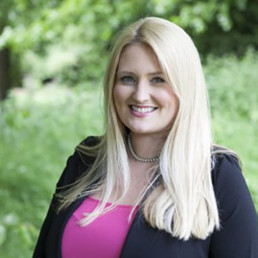
Written by Sarah Mullin
Deputy Headteacher and EdD student
A blog by Sarah Mullin and Dr Deborah Outhwaite
It is widely acknowledged that gender representation, in addition to other forms of diversity, is essential for society to thrive, yet women are still underrepresented globally in politics, health, business, and other organisations. Despite research which highlights the positive influences women bring to leadership positions, many organisations report difficulties in attracting and retaining women leaders. Schools can therefore play an important role in helping girls to realise their potential so that they can be the change that they want to see in society.
How can schools better prepare girls for future leadership positions?
- Engage men as allies
It is important for us to engage boys as allies by raising awareness of gender privileges so that they feel confident to challenge inequality when they see it. We need boys to appreciate the positive qualities that women leaders bring to the table and to work with girls to so that gender equality can be achieved.
- Encourage STEM careers
Just 24% of UK STEM roles are occupied by women and these are wide-ranging, technical professions which are critical to the economy. By harnessing positive role models from organisations such as STEM Ambassadors, we might ignite a passion for future careers in STEM, particularly in young women from households where there is no prior experience in these areas.
- Financial education
Women live longer but financially poorer lives than their male counterparts, and part of this is around the ownership of finances, occupying lower paid, part-time roles, and the lack of professional careers with occupational pensions. Although no one young wants to think about retirement, financial education is key.
- Tackle Imposter Syndrome
For years, girls have outperformed boys academically, yet girls may lack the confidence to believe in themselves and their future potential. We can help girls to be aware that having feelings of self-doubt is normal; imposter syndrome can affect anyone at any time. We can help girls to recognise the positive skills and attributes they possess so that they feel empowered to embrace and celebrate their positive qualities.
- Encourage Self-Care and Wellbeing
We teach our children and young people to take care of their physical and mental health; it is equally important to encourage girls to invest in their wellbeing. Whether schools are promoting positive body image or banishing berating self-talk, girls need to grow up appreciating that self-care is far from selfish: it is a necessity.
- Inspirational Role Models
We can celebrate the multifarious roles that women leaders possess: women can be mothers and partners in addition to being leaders. Let us teach our girls about the possibilities of flexible working patterns, showing them how to be assertive and confident so that they are able to make the future life choices which are right for them. Let us help our girls learn about inspirational women from diverse backgrounds in a range of careers so that they have positive role models to look up to.
For the first time in history, two women shared the 2020 Nobel prize for Chemistry proving that the realisation of a more equitable society is achievable. So, let’s encourage our girls to aim high, dream big and work hard to become the change we want to see in society. After all, you cannot be what you cannot see.
To Cite this article, please use:
Mullin, S. & Outhwaite, D. 2020 ‘You Can’t Be what You Can’t See: Growing Future Leaders in Education’, Engage Magazine, issue 21, p9.
Sarah Mullin is a Deputy Headteacher and Doctor of Education student. She is the curator of the bestselling book What They Didn’t Teach Me on My PGCE and the founder of #EduTeacherTips, a YouTube channel for teachers, by teachers.
Dr Deborah Outhwaite is the Director of the Derby Teaching Schools Alliance (DTSA), BELMAS Council Vice-Chair, co-convening a Research Interest Group (RIG) on Leadership Preparation and Development (LPD and a Network Leader for @WomenEd in the East Midlands.
Wholeness and School Leadership: Why Race and Identity Matter
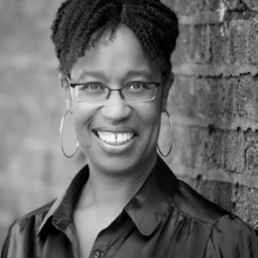
Written by Viv Grant
Director of Integrity Coaching
It is my belief that good school leadership has at its heart a desire for wholeness. It is a wholeness which individuals seek to see manifested through a harmonious interplay of their deepest values and beliefs, by fostering right relationships with themselves and others.
Recent events sparked by the death of George Floyd have clearly illustrated that we live in a society that is far from whole. Fault lines run through the lives of individuals and organisations, teachers and school leaders, families and their children.
We have seen how people have come together to try and repair the damage but there can be no papering over the cracks. For the dream of racial equality to be real, complete healing and transformation is needed.
A gradual dawning
I have witnessed over the past few weeks, that there has been a gradual dawning for many white school leaders of what is being asked of them. This has been a significant paradigm shift. There has been a gradual awakening of the need to review and re-shape white identity in order to accelerate the change that the black community has cried out for.
I recognise and understand that this is unfamiliar territory and can be scary for many. Never before in the UK has the debate on race equality in our schools shifted its gaze so steadfastly onto white identity and race. For as long as I can remember, it has been the other way around. Race equality work has predominantly focused on the black experience of racism and strategies for enabling the black community to overcome the huge injustices and inequalities that they have faced.
Now the narrative has changed. White teachers and school leaders are being called to do their own identity work.
A range of responses
For some, the immediate response has been defensiveness. And yet for others it has been a quiet, studied introspection; a turning inwards accompanied by a deep desire to learn, to enquire, to change, to understand and to grow.
For those who have turned inwards, I am certain that attention to the existential challenge of learning to be whole, will result in, “a net moral gain for all concerned. As that potential grows within us, we join in the potential for personal and social change” (Parker Palmer)
It may seem strange to some that I describe this turning inwards as part of a desire to be whole. Yet as a coach, I have seen the many, many ways in which the school leadership role has caused many leaders to live a divided (and sometimes painful life). Becoming aware of one’s own racial identity and how it has contributed to this can only be an act of service to the greater cause – to a world in which racial equality is a reality for all.
Whole person work
For this to happen, white school leaders need to be supported to see that this is whole person work; work that engages emotions, values and beliefs. It is work that requires them to engage with new personal and professional frontiers. It won’t be easy work, but it will be right work. It won’t come with a National Professional qualification stamp, because the work is ontological. The work is about you.
It will require you to:
- Engage in self-enquiry with an open heart and open mind
- Dig deep and develop greater levels of self-awareness
- Explore your own cultural blind-spots and biases
Essentially, this work will require you to decide how this type of identity work can bring greater agency and potency to your work as a school leader. If you are open and willing, it can bring you to a point where you can say, to be ally in the struggle for greater racial equality my inner truth is:
“The plumb line for the choices I make about my life, about the work I do and how I do it, about the relationships I enter into and how I conduct them”
(Parker J Palmer)
Our society needs to be healed and our schools need to be places of transformation and healing and white identity work has to be a central part of that healing process.
My Wellbeing as a LGBT Teacher

Written by Jared Cawley
Being a teacher who identifies as LGBT (lesbian, gay, bisexual and transgender) has presented its challenges. I believe a fundamental link between identifying as LGBT and wellbeing is safety. At a basic, psychological level, safety plays an integral part in our wellbeing and ability to function as a human. To feel unsafe, means that feelings of uncertainty, anxiety and fear are on loop in our everyday lives. If we do not feel safe in our environment, then our wellbeing will suffer. When we have good mental health and wellbeing, we can work productively and creatively, feel a sense of purpose and achievement, build strong relationships with friends and colleagues, and thrive personally and professionally. As a gay man, I am not part of the majority. I am marginalised. The working world is predominately heteronormative, where ‘straight’ is the preferred and encouraged sexuality.
LGBT Maltreatment
By looking at our recent history, society has not been kind to us queer folk. LGBT people have been spat at, demonised by the press and public, punished and incarcerated by law makers, chemically castrated and driven to suicide (Jones, 2017). The LGBT community has a legitimate right to feel unsafe in today’s world. Across the planet, seventy-three jurisdictions still criminalise private, consensual sexual activity between adults of the same sex. Roughly half of these are Commonwealth countries. Terrifyingly, there are twelve countries which impose the death penalty for being gay (Human Dignity Trust). In a huge number of countries, LGBT victims of sexual or gender-based violence cannot access justice mechanisms or get proper support.
A recent report shows that LGBT people are at a greater risk of being victim to hate crime compared to heterosexual people, where incidents are continuing to rise (Hudson-Sharp & Metcalf, 2016). Also, in the same report, if you identify as LGBT, you are more ‘susceptible to mental health problems than heterosexual people due to a range of factors, including discrimination and inequalities’. I may have painted a bleak and depressing portrait of the world, but this is the reality for many LGBT people. Being a teacher, it is paramount to work in an environment that is supportive, inclusive and takes your mental health and wellbeing seriously and makes you feel safe being the person you are.
Coming Out
The concept of ‘Coming Out’ is a political act. It is a form of rebellion against the heteronormative agenda. We spend our entire lives continuously ‘coming out’ to each new person we meet. This can be exhausting and risky. Making the decision to share your sexuality can be liberating, but we just do not know how that person is going to react. Luckily, I work in a school where I feel accepted, safe, and privileged to share my identity as a gay man. However, being comfortable, accepted, and safe is not always the case for every LGBT person; some LGBT teachers may think it is too risky to ‘come out’, as this could lead to discrimination and hostility from colleagues, parents and students.
Over the years, I have had to navigate the difficulties of working in a heteronormative environment and tread carefully about how open I am about my sexuality. I work in an international school where difference, otherness and diversity are celebrated and encouraged. In my school, families and students come from all corners of the world, dozens of nationalities and languages are seen and heard in our corridors and playground. There is a real richness of diversity and cultures. Yet, there are still moments where I question my personal feeling of safety and fear whether I will be accepted or not when meeting new families, students, and colleagues. Being open about your sexuality in the workplace is a personal choice. I know some LGBT teachers are comfortable to share their sexuality with everyone. On the other hand, I also know teachers who choose to not disclose their sexuality for many reasons. When meeting parents and families, or even colleagues, we do not know their opinions or beliefs about the LGBT community, or how they will react knowing we identify as LGBT. This feeling of uncertainty perpetuates a feeling of unsafety, having consequences for our wellbeing and mental health. This level of uncertainty may prevent LGBT teachers from applying for promotions or moving on to a different school (Lee, 2019). The anxiety and stress of having to ‘come out’ again to new people or having the school community take more interest in your personal life due to promotion, may be a risk that LGBT teachers are not willing to take. To question whether you will be accepted due to your sexuality, is something heterosexual people do not experience.
Section 28
Although the UK has made strong advancements in legislation for the protection of LGBT teachers, some teachers still feel fear in their schools today. Catherine Lee, in her research, talks about the consequences Section 28 had on the education profession. From 1988 to 2003, LGBT teachers were silenced, and their wellbeing damaged by law. This piece of legislation stopped maintained schools from promoting the acceptability of homosexuality. Lee’s research shows that LGBT teachers who lived through Section 28 have a very different experience in their workplace, to those who joined the teaching profession after the repeal in 2003. Those teachers who lived through this persecution are less likely to see their personal and professional identities as compatible and less likely to bring their partner to a school social event (Lee, 2019). Not only should schools encourage and foster an inclusive culture for all but have whole-school practices that are uniquely in place to support LGBT teachers. I think when teachers feel valued and supported, they will feel safe having a positive impact on their individual wellbeing.
What can school leaders do to support LGBT staff’s wellbeing?
Most LGBT school staff will have experienced some sort of battle with their mental health. For a school to be productive and successful, everyone who works there should have good mental health and be supported when help is needed. Here are some tips to support the wellbeing of LGBT staff:
- Use inclusive language
Making small changes around inclusive language can have a huge impact on either making people feel accepted and/or feeling excluded. If we make staff feel excluded, their wellbeing will suffer.
Here are my suggestions:
- When asking about a colleague’s weekend or personal life in the staffroom, be mindful of the pronouns they use to describe their partner. If they do not specially describe their partner as ‘he’ or ‘she’, they make be indicating their partner is of the same sex. Never assume someone is heterosexual and is attracted to the opposite sex.
- Instead of greeting your staff team with, ‘Good morning ladies and gentlemen’, say, ‘Good morning everyone’. With this, you have included all genders and identities without assuming everyone identifies with the gender they were assigned to a birth.
- Challenge colleagues and students who use phrases that diminish sensitivity or acting like a particular gender. For example: ‘man-up’, ‘you throw like a girl’, and ‘boys don’t cry’.
- Visibility
LGBT staff need to feel accepted and be shown that their workplace is inclusive. School leaders should proudly show they support LGBT staff. If we do not feel accepted, then this may have a detrimental effect of our wellbeing and mental health.
- This could be by wearing LGBT lanyards, flying the Pride flag outside and inside their school, having displays around school that celebrate diversity and LGBT issues.
- Have your staff complete a learning walk where LGBT is the focus, can you spot anything in your school that says this is a safe space for LGBT students, families, and staff?
- Educate Yourself to understand LGBT perspective and experiences
Read books and use organisations that specifically discuss LGBT voices in education and whole school approaches. It can be difficult for people who are not part of a minority group and see life from their perspective:
- Catherine Lee’s ‘Courage in The Classroom. LGBT Teachers share their stories’.
- Shaun Dellenty’s ‘Celebrating Difference. A Whole School Approach to LGBT+ inclusion’.
- Andrew Moffat’s book series for the No Outsiders programme.
- These organisations offer a plethora of teaching resources with supporting LGBT colleagues and students: Schools Out, Stonewall Education, Mermaids UK, LGBT Ed, and The LGBT Primary Hub.
The LGBT Primary Hub offers a snappy timeline of our history and glossary of LGBT vocabulary.
References
Dolan, C. (2014) Into The Mainstream: Addressing Sexual Violence Against Men and Boys in Conflict. Available at: “https://reliefweb.int/sites/reliefweb.int/files/resources/Into_The_Mainstream-Addressing_Sexual_Violence_against_Men_and_Boys_in_Conflict.pdf”
Jones, O. (2017, July) Hatred of LGBTQ People Still Infects Society. It’s No Time to Celebrate. The Guardian. Available at: “https://www.theguardian.com/commentisfree/2017/jul/27/lgbtq-partial-decriminalisation-homosexuality-gay-trans”
Human Dignity Trust. LGBT The Law. Available at “https://www.humandignitytrust.org/lgbt-the-law/”
Hudson-Sharp, N., Metcalf, H. (2016) National Institute of Economic and Social Research (NIESR). Inequality Among Lesbian, Gay Bisexual and Transgender Groups in The UK: A Review of Evidence. Available at “https://www.niesr.ac.uk/sites/default/files/publications/160719_REPORT_LGBT_evidence_review_NIESR_FINALPDF.pdf”
Lee, C. (2019) Fifteen years on: the legacy of section 28 for LGBT+ teachers in English schools, Sex Education, 19:6, 675-690, DOI: 10.1080/14681811.2019.1585800

